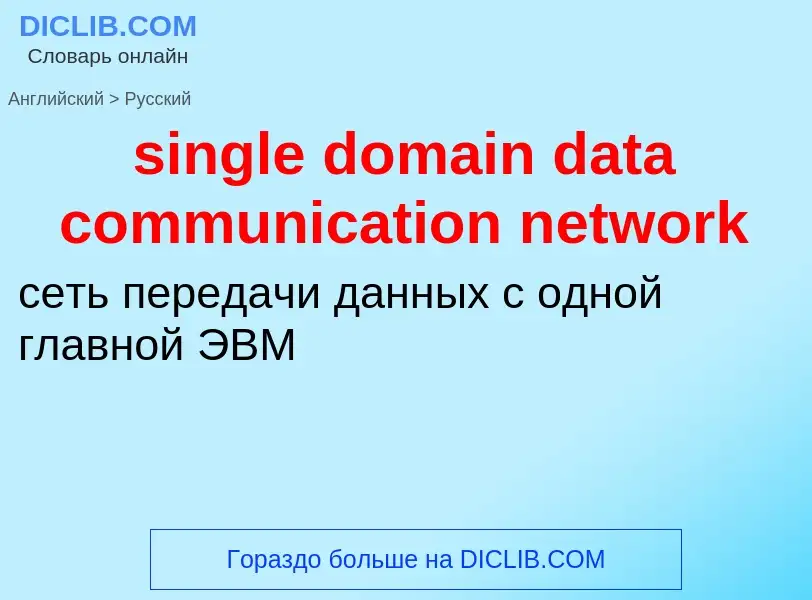Tradução e análise de palavras por inteligência artificial ChatGPT
Nesta página você pode obter uma análise detalhada de uma palavra ou frase, produzida usando a melhor tecnologia de inteligência artificial até o momento:
- como a palavra é usada
- frequência de uso
- é usado com mais frequência na fala oral ou escrita
- opções de tradução de palavras
- exemplos de uso (várias frases com tradução)
- etimologia
single domain data communication network - tradução para russo
Смотрите также
математика
информационная сеть
Definição
1) Принудительное безвозмездное - конфискация - или оплачиваемое - реквизиция - изъятие чего-л., производимое государственными органами.
2) Лишение одним классом или одним из слоев класса собственности и прежнего социального положения другого класса или другого слоя того же класса.
3) Любое принудительное отчуждение чего-л.
Wikipédia
In data management and database analysis, a data domain is the collection of values that a data element may contain. The rule for determining the domain boundary may be as simple as a data type with an enumerated list of values.
For example, a database table that has information about people, with one record per person, might have a "marital status" column. This column might be declared as a string data type, and allowed to have one of two known code values: "M" for married, "S" for single, and NULL for records where marital status is unknown or not applicable. The data domain for the marital status column is: "M", "S".
In a normalized data model, the reference domain is typically specified in a reference table. Following the previous example, a Marital Status reference table would have exactly two records, one per allowed value—excluding NULL. Reference tables are formally related to other tables in a database by the use of foreign keys.
Less simple domain boundary rules, if database-enforced, may be implemented through a check constraint or, in more complex cases, in a database trigger. For example, a column requiring positive numeric values may have a check constraint declaring that the values must be greater than zero.
This definition combines the concepts of domain as an area over which control is exercised and the mathematical idea of a set of values of an independent variable for which a function is defined, as in Domain of a function.


![A typical home or small office router showing the [[ADSL]] telephone line and [[Ethernet]] network cable connections A typical home or small office router showing the [[ADSL]] telephone line and [[Ethernet]] network cable connections](https://commons.wikimedia.org/wiki/Special:FilePath/Adsl connections.jpg?width=200)

![[[Fiber optic cables]] are used to transmit light from one computer/network node to another [[Fiber optic cables]] are used to transmit light from one computer/network node to another](https://commons.wikimedia.org/wiki/Special:FilePath/Fibreoptic.jpg?width=200)






